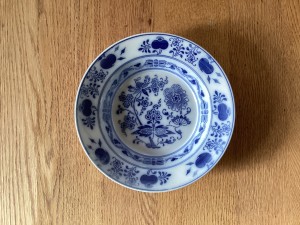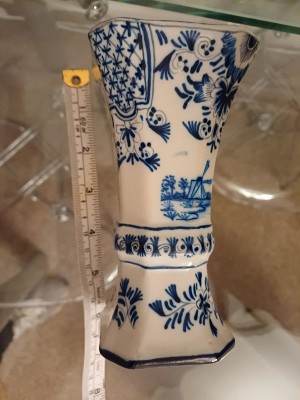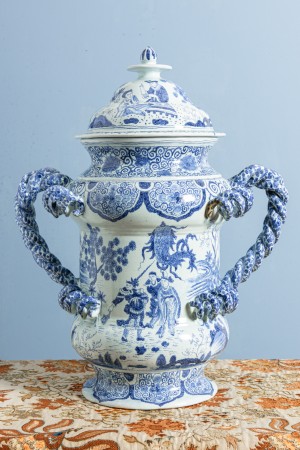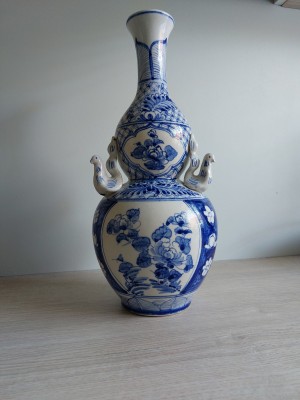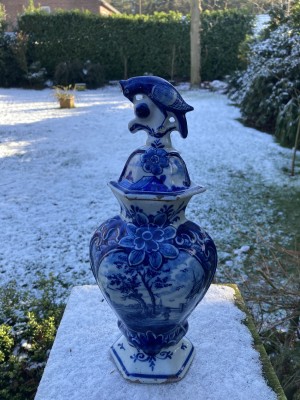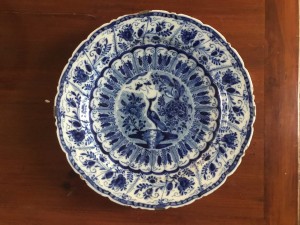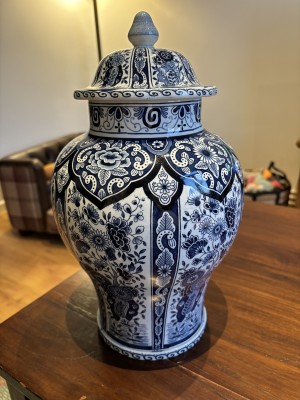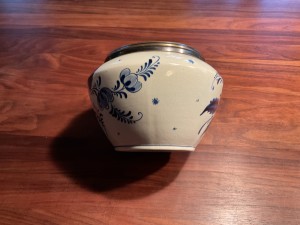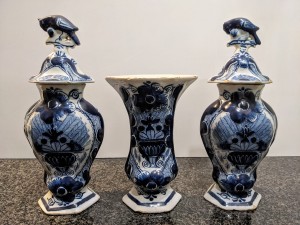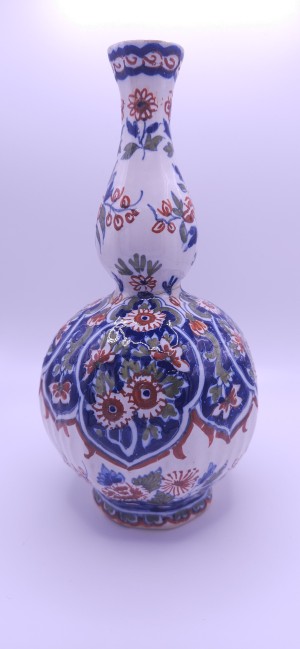Femke Diercks is conservator Europese keramiek en glas in het Rijksmuseum in Amsterdam. Sinds 2009 is ze werkzaam bij het Rijksmuseum, waar ze eerder onderzoek deed voor de catalogus Paris 1650-1900. Decorative Arts in the Rijksmuseum.
In 2015 organiseerde zij samen met Jan van Campen de tentoonstelling Azië in Amsterdam. Luxe in de Gouden Eeuw. Momenteel werkt zij aan de (online) bestandscatalogus voor de collectie Delfts aardewerk.
Last comments
Not Delftware
Bord24 January 2024Verdict:
- Not Delftware
Analysis:
- Not earthenware
- Not hand-painted
- No mark visible
20th century transfer printed ceramic with decorations inspired by the zwiebelmuster pattern.
Not Delftware
Small vase22 January 2024Verdict:
- Not Delftware
Analysis:
- Not made in Delft
- More recent production technique
- Unidentified mark
Not a known Delft mark. Based on the style and composition of the decorations, made after 1850.
Interesting that there seems to be a color difference within the blue decorations.
Not Delftware
twisted handle vase19 January 2024Verdict:
- Not Delftware
Analysis:
- Not made in Delft
- Tin-glazed earthenware
- Forged mark
Merk:
- AR False
Too good to be true, indeed a later reproduction.
Not Delftware
Kalebas vaas19 January 2024Verdict:
- Not Delftware
Analysis:
- Not earthenware
Chinees of Japans porselein
Delftware
Vaas met deksel18 January 2024Verdict:
- Delftware
Analysis:
- Delftware, made between 1620 – 1850
- Tin-glazed earthenware
- Hand-painted
- Mark of a Delft pottery/factory
Merk:
- Een klauw
dank voor het delen van dit object
Delftware
Schotel17 January 2024Verdict:
- Delftware
Analysis:
- Delftware, made between 1620 – 1850
- Tin-glazed earthenware
- Hand-painted
- Mark of a Delft pottery/factory
Merk:
- Een klauw
dank voor het delen van die mooie bord
Not Delftware
Vase 11 January 2024Verdict:
- Not Delftware
Analysis:
- Not made in Delft
- More recent production technique
- Not hand-painted
De stijl van deze dekselvaas is verwant aan Delftse en Chinese modellen, maar de techniek is anders.
Not Delftware
Tabakspot10 January 2024Verdict:
- Not Delftware
Analysis:
- Not made in Delft
- More recent production technique
- Not earthenware
- Unidentified mark
Vermoedelijk 20ste-eeuws product in Delftse stijl, met onbekend merk.
Delftware
Kaststel7 January 2024Verdict:
- Delftware
Analysis:
- Delftware, made between 1620 – 1850
- Tin-glazed earthenware
- Hand-painted
- Mark of a Delft pottery/factory
Merk:
- Een klauw
dank voor het delen van dit prachtige stuk
Indeterminable
Vase6 January 2024Verdict:
- Indeterminable
Analysis:
- Tin-glazed earthenware
- Hand-painted
- Possibly false mark
het merk ziet er verdacht uit. LVE merken komen op zich ook op het glazuur voor, maar het handschrift van het merk, in combinatie met de vorm van de fles, geven vraagtekens. De kleuren van de decoraties zijn van deze foto's moeilijk te beoordelen, dit zou kunnen helpen in de beoordeling.

